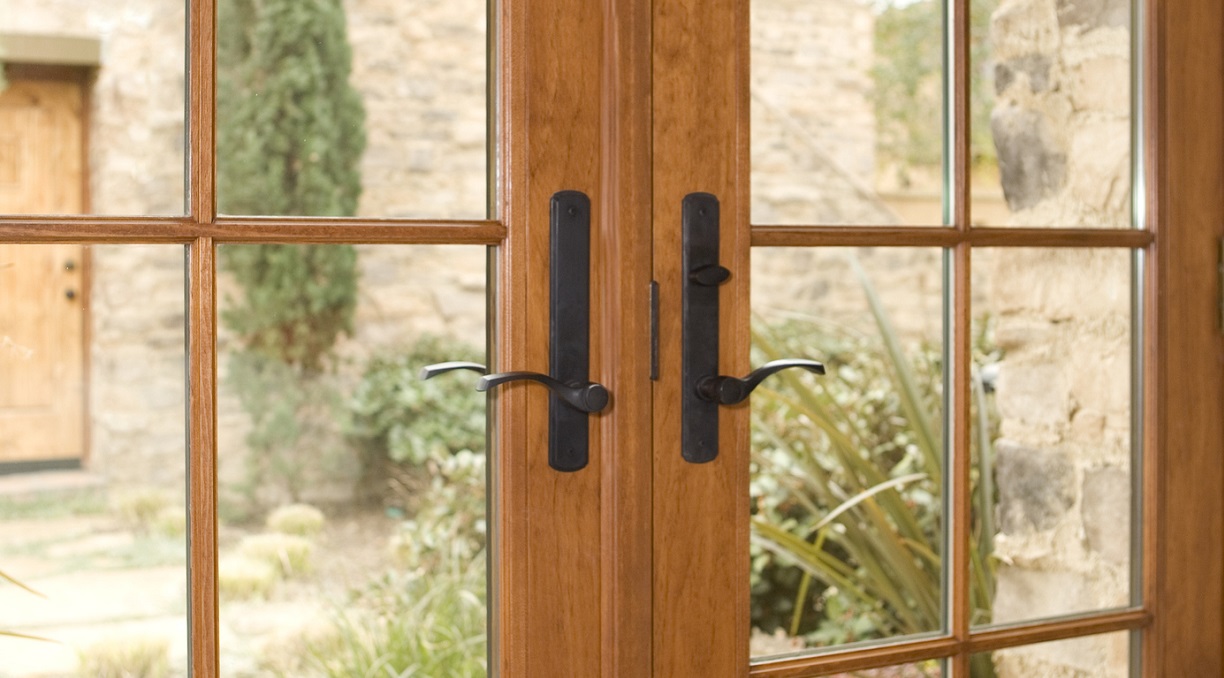French Doors Buying Guide
Reading time: 5 minutes
What are French doors?
French doors, also referred to as French windows, are believed to have taken their name from the 17th century architectural fashion of having doors that were symmetrical to each other. This was considered a more pleasing arrangement than single doors and allowed for a wider doorway – perhaps to make room for the wider skirts of the time!
Today, exterior French doors are often found in homes where the lounge can open out onto the garden, made up of two or four panels that fold. When interior doors are fitted between rooms, this is often a style decision or for letting more light through. Since their earliest days, French doors have evolved in styling, design, materials and features. We’re going to cover these in more detail to offer greater insight into the right French doors to choose.
Do French doors come in different sizes?
French doors in the UK tend to be produced to a standard set of measurements. The standard height for external French doors will be around 1900mm – 2100mm, with a door thickness of approximately 44mm – 54mm. You’ll normally find French door dimensions in the following widths, although there may be some variations:
-
1200mm
-
1500mm
-
1800mm
-
2990mm
Measuring for French doors
Before fitting French doors, you need to measure the size of the hole you need to make in the wall. This measurement should be the full height of the door reveal and width of the doors. Double check these measurements, as it’s easy to be slightly off, creating problems with installation.
Always read the manufacturer’s instructions before installation and check you have all of the components present - this will help you to familiarise yourself with the parts and how they should be installed.
What are French doors made of?
Although French doors are traditionally made from wood, we now have the benefit of other materials that give us more options when it comes to cost, style and durability. Along with hardwood French doors, you can install uPVC and aluminium French doors.
- Oak and Hardwood French Doors
- uPVC French Doors
- Aluminium French Doors
Fittings for French doors
As you can imagine, there are plenty of accessories and door hardware that you can get for your French doors. We’re going to cover the two main types of hardware you can consider when installing French doors – handles and locking mechanisms.

French door handles
The main difference between fitting handles to French doors is that the bolt of the handle should connect with another door, not a door frame (like with regular, single doors). This means that the doors need to have a little more security when they’re pulled together. For this, they need a strike plate which sits on the edges of each door where they connect. The bolt goes through the opposite strike plate holding them securely in place.
French door locks
The standard locks you find for most front doors and French doors are the 5-lever mortice lock. For front doors, this isn’t usually considered a secure enough lock on its own and further locking bolts are often added. However, because French doors are usually fitted at the back of a property, further locks are often overlooked. It’s worth considering locks such as surface door bolts, as an extra security measure - but do always refer to the manufacturer’s instructions for suitable hardware.
When buying French doors, there can be almost as much variety as there is with regular external front doors and their accessories. If this guide has helped, you can find more door advice and inspiration at Trade Corner.
Disclaimer: The information contained on this page is intended as an overall introduction and is not intended as specific advice from a qualified professional. Travis Perkins aims to avoid, but accepts no liability, in the case that any information stated is out of date.





